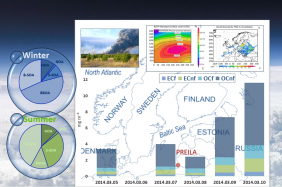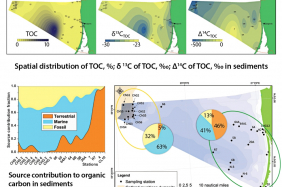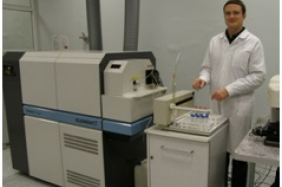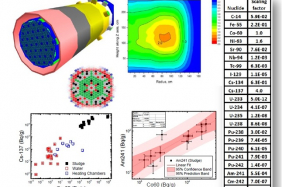Science
- Home
- Science
- Excellence
- Environmental Research and energetics
-
Excellence
- Advanced materials and technologies
- Surface chemistry and nanotechnology
- Photonic and Laser Technology
- Metrology and measurement technology
- Environmental Research and energetics
- Organic materials and nanoenginering
- Electrochemical energy conversion technologies
- Research of the structure and composition of solid materials
- Long-Term Programs
- Scientific publications
- Conferences
- Projects
Environmental Research and energetics
At the intersection of Environmental and Energy sciences and the European Green Deal program lies a transformative synergy where scientific insights drive a framework of interdisciplinary research and sustainable solutions to mitigate the impact of climate change and create a more resilient and sustainable future.
The Department of Environmental Research investigates small-scale fundamental processes occurring with atmospheric aerosols and concentrates on advanced scientific equipment and expertise on atmospheric pollution and related climate change, develops environmental instruments, and develops new methods for assessing environmental quality. It investigates the fundamental processes underlying the formation and evolution of natural and anthropogenic aerosol particles and the interactions with the main sources of pollution and the processes controlling their dynamics. The competence focuses on the development and application of innovative and intelligent methods for the identification and assessment of pollution sources and the characterization of the impact of fuels used in different economic sectors on the state of the environment and on climate change mitigation. The Unit contributes to improving the development of effective national strategies for air pollution control and climate change mitigation and adaptation, which enables the integration of new advanced air quality knowledge generated in Lithuania into the global research network and projects. Particular attention is paid to the application and deployment of technologies in ambient air and indoor microclimate quality assessment and control systems. An innovative methodology and instrument for the determination of mercury, an elemental component of mercury in air or other gases, is being developed. The synthesis of graphene oxide and graphene oxide, magnetite, Prussian blue and chitosan based nano-composites is carry out as well as their application to remove harmful metals (e.g., Co, Ni, Cu, Pb) and radionuclides (e.g., Cs, Pu, Am) from contaminated media, and preconcentration of metals and radionuclides from environmental samples. Moreover, the radioanalytical methods are applied for the preparation of radionuclides (238,239,240,341Pu, 241Am, 242,243,244Cm, 90Sr, 55Fe, 63Ni) from various media for measurements, alpha and gamma spectrometry. Research is also being carried out on microplastic sorption, degradation, synthesis of nanomaterials and their application to the degradation and absorption of microplastic particles.
At the Department of Nuclear Research training and expertise in the fields of nuclear physics, nuclear and mass spectroscopy is performed, development of smart-environment and environment-safe nuclear fuel cycle technologies as well as implementation of new material modification and analysis methods.
The scope of the activities of Experimental Nuclear Physics Laboratory lies from the theoretical modelling and experimental determination of radionuclide in the reactor to creation of new technologies ensuring nuclear and radiation safety and optimizing radioactive waste management. Determination of nuclide composition of radioactive waste by using scaling factor (nuclide vector) method developed in our department is successfully used both in Lithuania during the decommissioning process of the Ignalina Nuclear Power Plant radioactive waste management (working as TSO in the area of radiological characterization of the INPP) and in foreign nuclear facilities (Paldiski submarine reactor site, PREDIS EU project). Theoretical and experimental research on degradation of engineering barriers of hazardous and radioactive waste packaging and waste repositories as well as long-term geological storage repositories are performed, assessment of radionuclide accumulation and migration in the environment are analysed (JOPRAD EU project). Well-developed methods for plutonium (238Pu, 239,240Pu), caesium (134Cs, 137Cs), americium (241Am, 243Am), strontium (89Sr, 90Sr), technetium (99Tc), iron (55Fe), nickel (63Ni) and lead (210Pb) isotope identification in different media. The nuclide composition evolution in the neutron flux is performed using the simulation codes (MCNP, SCALE, GEANT4), their dispersion in the reactor water circulation circuit and contamination of related systems is performed with OSCAR, other programs (such as LietDos) are adapted to predict radionuclide propagation in the environment. Research of the processes of interaction of high intensity light pulses with material and search of new materials sensitive to ionizing radiation for radiation detection purposes are carried out. The development of ion-beam analysis methods (RBS, PIXE) and modification of properties of semiconductor materials by high-energy heavy ion beam is carried out, as well as their application in the development of thin-layer technologies for application in Lithuanian high-tech enterprises.
Mass Spectrometry Laboratory develops innovative methods for investigation of the processes in material sciences, biological and environmental objects. The method the ratio of stable isotopes is applied in research atmospheric micro constituents and new technologies in the areas of ambient air pollution and climate change mitigation are proposed. This unique method allows understanding of the mechanism of the processes occurring in the atmosphere, allows determination of the sources of aerosol particles and gas constituents, their spatial and temporary distribution. Also, this method is used in the analysis of geological archives, this makes it possible to determine the causality of climate change from a time perspective. Studies of sediments by the method of stable isotopes make it possible to assess the rate of removal of carbon dioxide from the atmosphere. The use of the labelled stable isotope method in plant research makes it possible to assess the conditions and regularities of carbon and nitrogen transfer.
At the Accelerator Mass Spectrometry Laboratory, the carbon isotopic ratio measurements by accelerator mass spectrometry are used in archaeological dating, environment and biology research. The main focus is paid to creation of new technological solutions in order to reduce environmental air pollution more effectively.
Department of Nuclear Researches actively participates in international projects, constantly expands cooperation with scientists from various fields and industry representatives. We encourage the involvement of students and young scientists in ongoing projects, provide opportunities to learn from leading experts in the field and participate in scientific research.
The competence of these methods is gathered:
- Department of Nuclear Research (Head dr. A. Plukis)
- Department of Environmental Research (Head dr. S. Byčenkienė)



